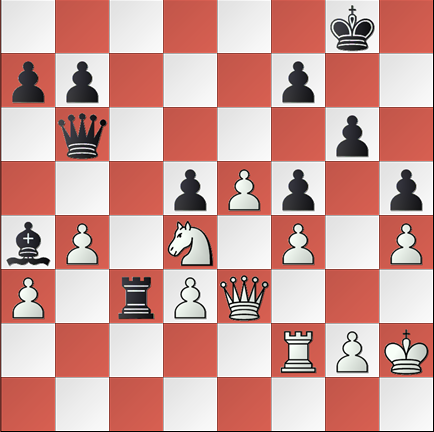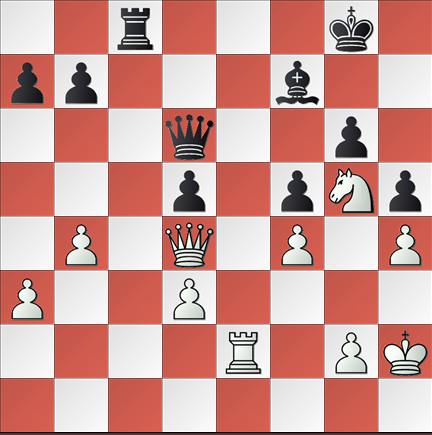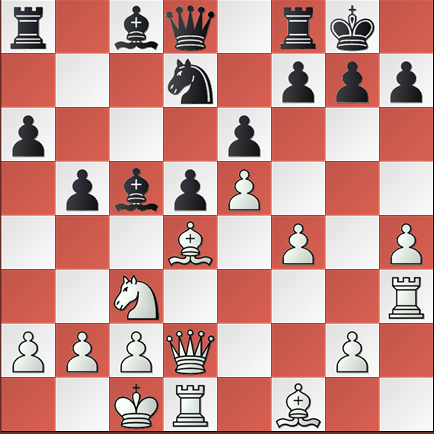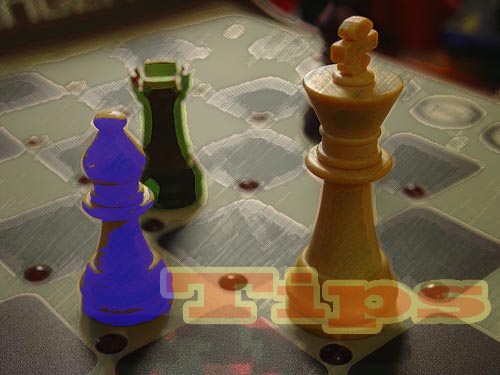The most important part in the game of chess is the middle game (we saw that in Consequences of Bad Bishop), where both the players, having developed their pieces reasonably well, initiate a series of attacks, counter-attacks, checks, and sacrifices in an effort to gain control over the opponent. The quality of the middle game and the nature of the strategy adopted by the players during this phase of the game are primarily determined based on the positions of the pieces and the kind of development one does take in the opening part.
The nature of the opening game and the favorable positioning of the major and minor pieces determine the tempo for the middle game. We have discussed at length about the Isolated Queen Pawn. Similarly, we might be confronted with an issue of bad French bishop.
What is bad French Bishop? Black’s light squared black bishop is often given this name. In some types of opening games, as part of the development of the pieces in accordance with the classical opening principles, the player playing black might have to move his king pawn at e7 one square ahead to e6 and the queen pawn two squares ahead to d5. These moves, made out of necessity to develop the minor pieces, might appear good in the first instance. However, a second look might reveal that the pawn placed at e6 and/or at d5 might effectively block the diagonal c8-h3 and the diagonal a8-h1, seriously hampering the movement of the light squared black bishop starting from the c8 square. Literally, the movement of the light squared bishop is blocked by its own pieces and sometimes, this immobility of the black light squared bishop might lead to inadequate development, and ultimately present an advantage to the opponent. This situation is referred to as black’s bad French bishop. The name “French” is added to the bishop as this situation typically arises in a French opening.
Let us try to understand this aspect and assess how this bad French bishop plays the spoilsport for the black’s pieces through the review of a game played between two grandmasters
Given below is the position after 25 moves, and it is the turn of white to make the move now.

A cursory look at the position indicates that, among the minor pieces, White has sacrificed both of its bishops and retained one Knight, as against one light squared bishop for black. White’s Knight occupies the important d4 square, and the game is evenly poised.
The game proceeded along the following lines:
| 26. | e6 | … | White decides to open up the position |
| 26. | … | fxe6 | |
| 27. | Qe5 | … | White plans to target f6 square for Queen |
| 27. | … | Rc7 | Not a good response from black. It would have been better had he played Qc7 instead of Rc7 |
| 28. | Qf6 | Be8 | |
| 29. | Nxe6 | Qd6 | |
| 30. | Re2 | Qe7 | |
| 31. | Qb2 | … | This is a smart move by White offering to sacrifice his h4 pawn Black has other ideas and prefers to go with them |
| 31. | … | Rc8 | |
| 32. | Ng5 | Qd6 | |
| 33. | Qd4 | Bf7 | The last move by Black is a blunder, literally gifting the game to white, courtesy Black light squared Bishop |
This is the position on the board, which clearly shows the blunder of black’s French bishop, leading to the victory for White.

| 34. | Qh8+ | 1 – 0 |
This is an example in which the light squared bishop, devoid of development in the initial stages, has proved to be more of a burden leading to the downfall than of any constructive support in the attack.
It is for this very reason that in most of the variations of the famous French opening, an early sacrifice of black’s light-squared bishop is suggested.




